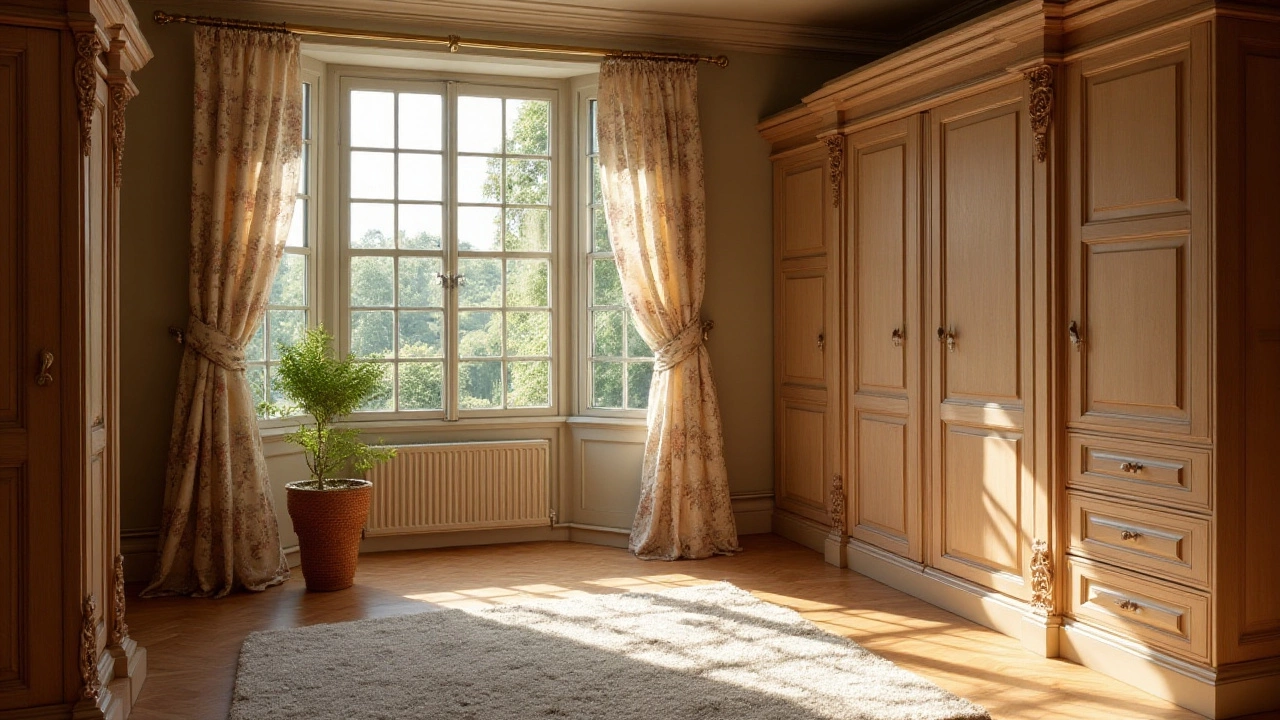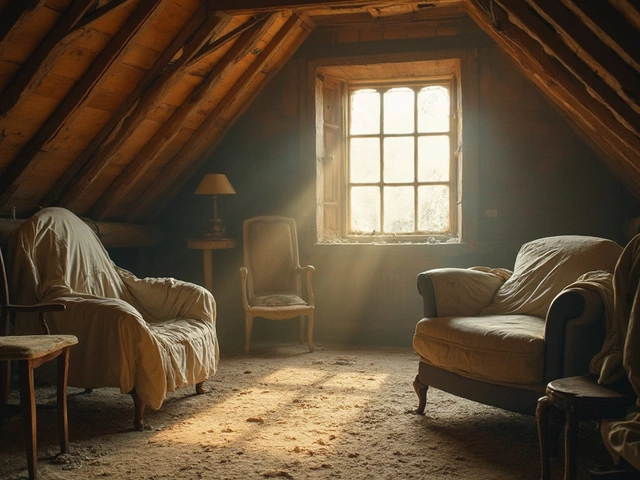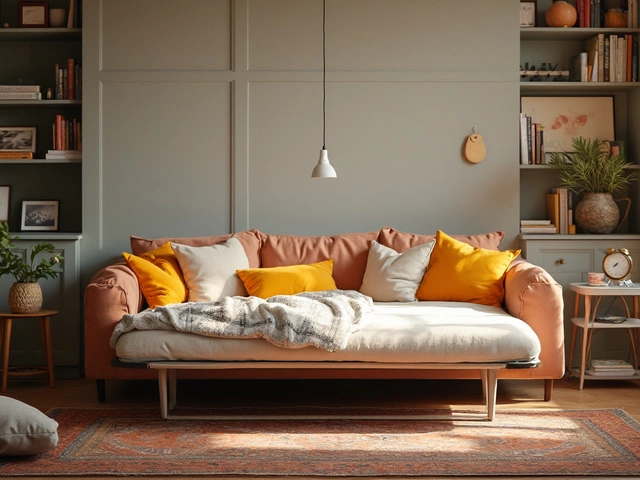The question of whether wardrobes are simply another term for closets, or if they hold a distinctiveness of their own, can lead us down intriguing paths of exploration. Both wardrobes and closets are pivotal furniture pieces that serve the purpose of storage, but they come with their nuances that are worth dissecting.
To truly grasp the differences, it's imperative to look at how history has shaped these storage solutions. Cultures and eras have left their mark, leading to the wardrobe's evolution from a standalone piece of furniture to sometimes being adapted into built-in structures. As we move on, we'll explore how each serves its purpose in a living space and uncover some useful tips to help you choose between the two.
- Historical Context of Wardrobes and Closets
- Structural Differences
- Functional Aspects in Modern Homes
- Design and Aesthetic Considerations
- Space Management Tips
- Choosing the Right Option for Your Needs
Historical Context of Wardrobes and Closets
The origins of the wardrobe can be traced back several centuries, when it began as a humble chest. This chest not only stored clothing but also acted as a symbol of status among the wealthy British nobility in medieval times. Initially made from oak, these chests featured intricate carvings and were often locked to protect valuable garments. As fashion evolved, so did the chests, expanding in size to accommodate the growing wardrobes of the affluent.
The 17th century marked a pivotal shift in design and functionality. Wardrobes began to transform from horizontal chests to vertical cabinets, emphasizing accessibility and space. As urbanization expanded in the 18th and 19th centuries, these standalone pieces became more ornate, reflecting the grandeur associated with the Victorian era. This historical evolution paved the way for the modern wardrobe, which continues to be a central feature in many homes today.
"Wardrobes are not just a storage solution, but a testament to the changes in lifestyle and living spaces over the centuries," notes Jane M. Smith, a renowned furniture historian.
Meanwhile, the concept of the closet evolved in parallel but served a slightly different purpose. During the Renaissance, closets were seen as small rooms used for private meditation, reading, or even writing. It wasn't until the 19th century in America, with the development of larger homes, that closets began to take on their role as dedicated clothing storage spaces, designed into the architecture of bedrooms. The increasing size of homes allowed for these built-in spaces to flourish, offering both organization and privacy.
Today, both wardrobes and closets embody more than just their historical roots. They reflect cultural shifts, technological innovations, and personal tastes. This rich history not only helps us appreciate their role in past societies but also guides us as we incorporate them into our modern lives. By understanding where they come from, we gain insight into how they can be best utilized in our own homes today.
Structural Differences
When you dive into the structural realm of wardrobes versus closets, the differentiating factors begin to unfold in layers. A wardrobe traditionally stands as a standalone piece of furniture, crafted with an artistic flair that sometimes honors the woodworking traditions of bygone eras. You'll often find them boasting ornate carvings and rich, polished finishes. These features elevate the wardrobe into more than just storage; it becomes a statement piece that melds functionality with art. As opposed to this, closets are commonly built into the walls of a room, seamlessly merging with the architecture. This integration helps in maximizing floor space, making closets a desirable option in smaller homes or apartments where every square foot counts.
Wardrobes typically house a combination of hanging space, shelving, and sometimes drawers, often encased behind beautiful double doors. They present a perfect blend of form and function, catering to versatile storage needs. On the flip side, closets might offer more flexibility in terms of layout as they can be customized extensively according to the user's preference. You might come across closets featuring adjustable shelving, rack heights, and even bespoke designs that incorporate tech elements like LED lighting or automated clothing racks. Interestingly, in certain cultures, possessing a grand wardrobe was once considered a sign of affluence, showing the significant role these structures have played in our domestic history.
In contemporary times, the material choice highlights stark contrasts between the two as well. Modern wardrobes often use materials such as high-quality plywood, MDF, or veneered boards, offering a balance between durability and aesthetics. Closets, being a part of the home's construction, often share materials with the rest of the home, such as drywall, which can be cleverly decorated with wallpaper or paint to match or contrast the surrounding space. It’s this adaptability that often gives closets an edge in home customization projects.
As the interior designer Julian Fellowes once remarked,
"The life of any home is breathed into by the warmth and practicality of its storage solutions. One must choose wisely, integrating both heritage and innovation."These choices reflect our need to harmonize practicality with personal style. With so many variables at play, understanding these structural differences becomes vital in making an informed choice between acquiring a traditional wardrobe or opting to remodel a space to include a closet. Whether your priority leans toward the portable and ornate or the built-in and seamless, each option offers unique advantages worth considering.
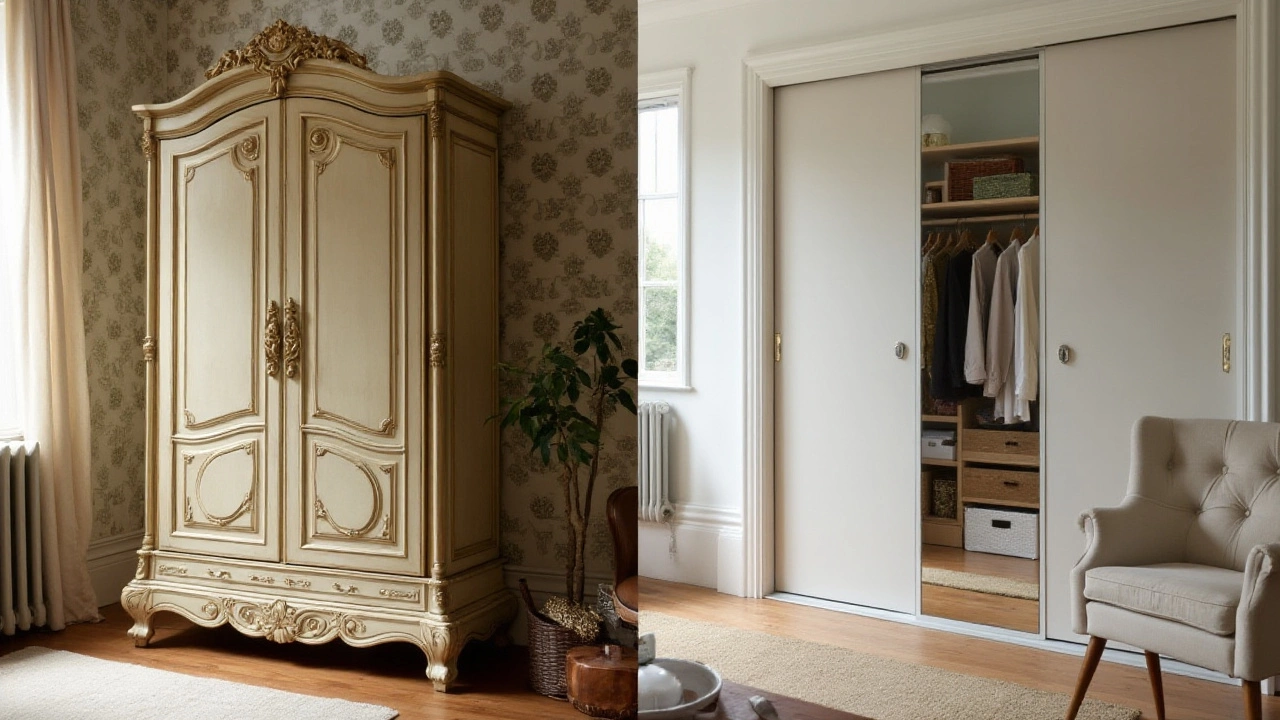
Functional Aspects in Modern Homes
When envisioning a modern home, the storage solutions are often at the forefront of determining a space's functionality and appeal. In today’s vibrant design landscape, balance between form and function is critical, and both wardrobes and closets play pivotal roles. These pieces have evolved alongside our living spaces to become more than mere storage solutions; they have transcended their traditional roles, embracing new technologies and design considerations that echo contemporary lifestyles. Wardrobes today are not just standalone furniture; they can be designed as integrated systems within rooms, featuring sliding doors that maximize space or even modular components that allow users to reconfigure the interior as their needs shift over time. On the other hand, closets are often built-in features within a home, and they frequently make use of vertical space, incorporating shelving and built-in organization systems that cater to modern urban living where efficient use of space is imperative.
An intriguing development in recent years is the integration of technology into wardrobe and closet design. Smart storage solutions now include lights that activate with motion sensors, ensuring users can find items easily without searching in darkness. Some wardrobes even offer smart hangers that rotate at the push of a button. A quote from Philip Greeves, an expert in smart home technology, captures this trend eloquently:
"The future of storage is interactive and intuitive. The wardrobe or closet of tomorrow is not just about holding clothes; it’s about enhancing how we engage with our living spaces on a day-to-day basis."Similar advancements are marking a shift in how we interact with storage in our homes, merging convenience with sophistication.
The variety of modern wardrobes often aligns with specific facets of contemporary living, reflecting a vast array of styles that can enhance the aesthetic of any home while providing much-needed utility. For instance, many urban dwellers lean towards minimalist design, as it conveys a sense of simplicity and order amidst bustling city life. Built-in closets are frequently chosen for their utility in tight spaces, providing seamless storage solutions without impeding open floor plans. Space management tips often recommend leveraging the hidden corners of built-in closets with corner shelving or using mirrored doors—a trend that adds the illusion of more space while making morning routines that much simpler.
Understanding the functional differences between wardrobes and closets can be illuminating, especially when planning a home. A wardrobe offers the benefit of flexibility; it can be positioned anywhere within a room, repurposed, or even moved to another home. Closets, meanwhile, bring with them a sense of permanence and structural solidity, often required in the compact layouts of urban apartments. A quick overview of modern preferences in wardrobes versus closets can be understood via the following table, which shows a comparison of their popular features in contemporary settings:
| Feature | Wardrobes | Closets |
|---|---|---|
| Flexibility | High, movable and customizable | Low, generally fixed in position |
| Space Utilization | Needs floor space | Utilizes vertical space more effectively |
| Customization | Often offers modular designs | Customizable within built framework |
| Technological Integration | LED lights, smart hangers | Built-in lighting, sensors |
Each option brings something unique to the table, making the choice between a wardrobe and a closet not just a question of needs but of lifestyle. Whichever path one chooses, today’s options promise solutions that are not only functional but also imbued with a personal touch, making our homes as efficient as they are expressive.
Design and Aesthetic Considerations
When it comes to designing a living space, both the wardrobe and the closet offer unique opportunities for personalization and style. At their core, they both serve a functional purpose, but they also bring different aesthetic qualities to a room. A wardrobe, with its grand structure, often stands as a statement piece within the space, commanding attention with its form and finish. These standalone furniture items allow for a variety of styles, ranging from the ornate and classic to the minimalist and modern. Closets, on the other hand, are typically more discreet, their design integrating seamlessly into the architecture of the home. This can offer a cleaner look, as they essentially turn the space into a cohesive element of the room.
One of the most notable design aspects of wardrobes is their versatility in customization. They can be constructed from a wide range of materials such as wood, metal, or even synthetic options, each offering its own texture and color palette. The choice of material is critical as it can dramatically influence the room's ambience, adding warmth with wood or providing a sleek, industrial vibe with metal. Additionally, wardrobes allow for doors that can be ornate with intricate carvings or even simple mirrored surfaces that can create an illusion of more space.
In contrast, closets are often built-in solutions meant to maximize space efficiency. Their aesthetic appeal often lies in their subtlety and the organizational possibilities they offer. With custom shelving, racks, and drawers, the interior of a closet can be tailored to fit specific needs, becoming an organizational powerhouse. However, wardrobes sometimes edge out closets in terms of standalone design impact, as they can be strategically placed within a room, making them not just functional but also an integral piece of the room's decor.
Design trends have seen a resurgence in the popularity of both open and closed wardrobe styles. Open wardrobes, often found in contemporary interiors, create an accessible and airy feel. They encourage neatness and provide easy access to clothing, but might require a bit more discipline to maintain a tidy appearance. Closed wardrobes offer the benefit of concealing clutter, providing a cleaner look that aligns well with traditional aesthetics.
"Furniture is meant to serve the purpose of its user, but it should also delight the eye." — Modern Interior Design Review, 2021
It's also essential to consider the visual weight a wardrobe or closet brings into a space. While a large wardrobe can provide ample storage, it may also become overwhelming in a smaller room, where a more integrated closet might be the better practical choice. The color and finish should harmonize with the rest of the room to ensure the furniture adds to the space's unity rather than distracts.
Regardless of whether one chooses a wardrobe or a closet, it’s important to align with personal tastes and practical needs. By reflecting on these design and aesthetic considerations, one can enhance the atmosphere and functionality of a living space, making it both beautiful and accommodating to one’s daily life routines. Balancing aesthetics with utility ultimately results in a home environment that is both welcoming and efficiently organized.
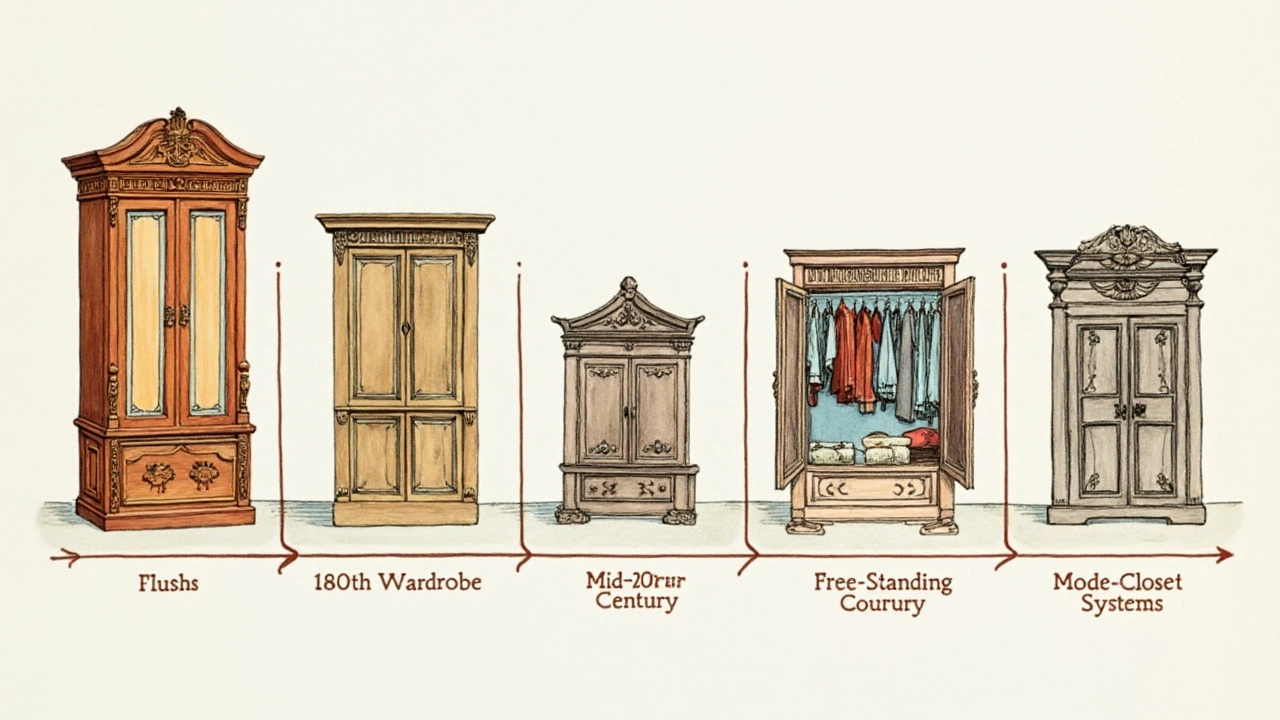
Space Management Tips
To make the most out of your storage areas, especially when dealing with wardrobes and closets, effective space management becomes essential. One of the first steps is to assess your needs thoroughly. Begin by conducting a detailed inventory of belongings, distinguishing between daily essentials and seasonal items. This will guide you in creating a more organized storage approach. Closets often have built-in shelves, which can be fantastic for stacking items but can sometimes lead to clutter if not arranged mindfully. Consider investing in stackable storage bins or baskets for smaller accessories such as scarves or ties, keeping them neat and within easy reach.
Another key tip is to harness the power of vertical space. Often, we fail to fully utilize the height of our wardrobes or closets. Install additional shelving or rods to maximize these areas. Adjustable shelves offer flexibility and can be a game-changer in rearranging your setup as needs change over time. For items that are less frequently used, like formal wear or specific seasonal gear, consider storing them on higher shelves to free up eye-level space for more regularly used clothes. A study from the Furniture and Home Design journal emphasizes this point, noting, “Maximization of vertical space can increase storage efficiency by up to 30%.”
Dealing with limited space can be challenging, but innovation is your ally. Incorporate door hooks and hanging organizers to efficiently utilize the back of closet doors. These are excellent for storing belts, ties, or even shoes. Another tip is to utilize slimline hangers, which take up less space and help fit in more clothes without sacrificing order. Foldable storage solutions also come in handy for irregularly shaped items, creating room where it seemed none existed. Visualization of the end result is a powerful motivator. Put creativity to use by envisioning a tidy, well-arranged layout, then work towards bringing that vision to life.
"The secret of getting ahead is getting started." – Mark Twain
Lighting can also play a surprising role in space management. A well-lit wardrobe or closet not only helps you see what you have but encourages you to keep it more ordered. Integrated LED lighting or even battery-operated stick-on lights can be excellent choices for brighter interiors. Last but not least, maintain a regular decluttering routine. As tempting as it may be to hoard, it's important to periodically review what's in your storage and eliminate what’s unnecessary. This ensures that your storage spaces don't become perpetually overwhelmed, but instead remain manageable and functional. Embrace these tips, and you'll find your storage areas more efficient and satisfying than ever before.
Choosing the Right Option for Your Needs
When it comes to picking between wardrobes and closets, the decision hinges on a variety of factors that extend beyond mere aesthetics. The journey starts with evaluating the space available in your home. Freestanding wardrobes often thrive in spaces that allow for flexibility, offering mobility and the ability to shift things around whenever the need arises. This characteristic can be quite beneficial in rented apartments where permanence is not desired. On the other hand, built-in closets can offer a more streamlined look, seamlessly integrating into the architecture of a room, which can be ideal for those planning to settle long-term.
Budget is another significant consideration when making your choice. Wardrobes typically offer a variety of price points, often being less expensive due to the absence of installation costs associated with permanent closets. Meanwhile, investing in a built-in closet can lead to increased home value, a worthwhile return for homeowners considering the future marketability of their property. Consider consulting with interior design professionals where possible, as their expertise can help navigate these choices based on spatial dynamics and personal style preferences.
Functionality plays a central role in decision-making as well. Consider the types of clothing and items you need to store. If your wardrobe involves long dresses, coats, or an extensive collection of shoes, a customized closet might suit your needs better. It offers the option to tailor compartments and shelving to fit specific requirements. Conversely, the charm of a well-crafted wardrobe comes with pre-determined spaces, which sometimes may be limiting unless you are open to custom solutions or extensions.
Another crucial factor is the environmental impact and sustainability of either option. In a world that increasingly values sustainability, selecting a product that is either crafted from eco-friendly materials or designed to minimize waste is a meaningful choice. Some modern wardrobes are made from recycled wood or sustainable sources, adding an eco-conscious layer to your selection process. Engaging with the manufacturer's information on sustainability practices can shed light on this aspect.
Practical Tips for Making the Decision
1. Assess both the present and future needs of your family. If your needs are likely to change drastically, opting for a flexible wardrobe could be advantageous.
2. Create a visual draft or use online tools to simulate how each storage option will look in your designated space.
3. If aesthetics is your focal yearning, explore styles from different cultures or eras to see which aligns with your personal taste.
4. Pay attention to material durability and weight capacity, especially if you have a large collection of items to store.
5. If space is premium, measure every inch and consider models that offer maximum functionality for compact living spaces.
"Choose practicality over aesthetics when space is tight, but if room size permits, let your creativity flow," notes interior design expert Clara Johansson.
